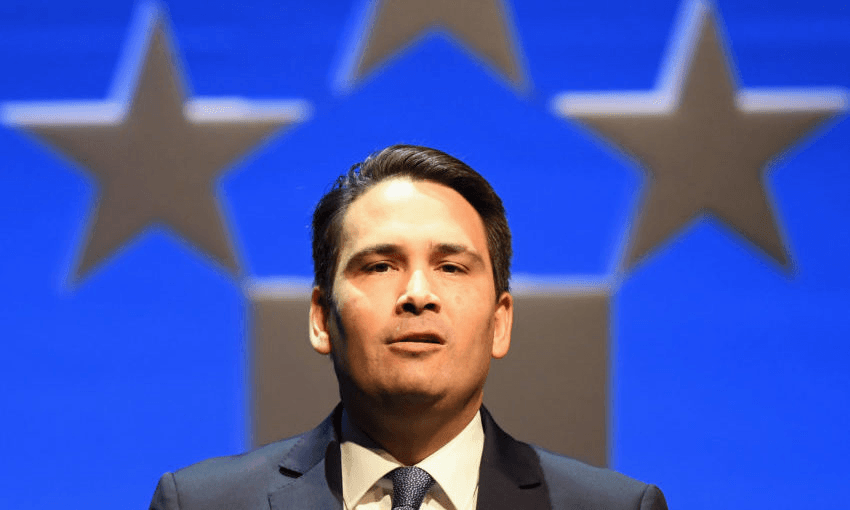The just completed party conference confirmed a widespread unity under Simon Bridges, while Jacinda Ardern is under more pressure than ever. If the cards fall benignly, it’s far from impossible, writes Liam Hehir
At the conclusion of a solid 2019 conference, the National Party’s path to victory in 2020 has not changed – it remains very narrow. The Greens aren’t going to defect from Labour and, assuming Winston Peters remains the leader, NZ First isn’t about to, either. So that means National needs to outpoll Labour and for both government support parties to dip under 5% on Election Day.
Those things are largely out of National’s control, of course. There’s probably nothing the party can do to procure the downfall of the Greens, for example. So, to an extent, the ultimate fate of Simon Bridges comes down to, well, fate.
But while the conditions of victory are not within the control of the National Party, its parliamentary caucus certainly has it within itself to bring about defeat. Radicalisation by Twitter would be one way for it to happen, should MPs continue to take the relaxed discipline of opposition as a licence for social media self-indulgence. The other, of course, is the appearance of internal ructions.
Ask any Labour insider how focus groups responded to the instability of the post-Clark wilderness years. I can assure you that the dramas stirred up by the Chris Carters and David Cunliffes of the party exacted a withering toll. Open factionalism and backstabbing is the surest way to lose an election.
Since last year’s conference, National’s caucus discipline has usually held. But it has also come under strain from the ambitious and the malcontented from time to time. At the close of this year’s conference, however, this has largely dissipated, with MPs getting the picture as to how electorally corrosive ongoing low grade conflict can be.
The party membership, despite the expected grumbling, has largely maintained discipline also. It is easy to look at modern political conferences and see them as controlled and staged managed events. And when things are going well, they usually are.
When things are not going well, on the other hand, that control cannot be assumed. Labour’s 2012 conference, for example, was an unmitigated disaster that was marred by rumours of an impending leadership coup. The party membership even snatched sole responsibility for electing the leader away from the parliamentary caucus – which proved disastrous.
Why hasn’t this happened with National, at least not yet?
The general feeling is that one thing helping Bridges is that the party has runs on the board. The party completely wrong-footed the tactically inept government on capital gains tax and even forced the prime minister into ruling it out for all time. The drama of the budget leak swung the spotlight away from the smoke and mirrors of the so-called wellbeing budget.
A shift by the government towards negative messaging also seems to be helping National. A recently released and quickly deleted advertisement by the Greens which mocked Bridges’ working class, West Auckland accent is a good example of the type of thing that will activate National’s tribal instincts. Being made the focus of unfair criticism is just the ticket to galvanise the party behind Bridges.
The government’s ongoing stagnation helps, too.
Jacinda Ardern is very good at what the historian Daniel J Boorstin called “psuedo-events”. These are happenings that generally lack real news value but which are designed to be dramatic looking and to catch the government’s attention. The concept has been around since the 1960s but, in the age of social media vitality, they’ve come to dominate how political news is covered.
No amount of artifice, however, can cover up for a lack of substance forever. This government came into the world as an incoherent amalgam of social democrats, nationalist, eco-socialists, reactionaries and the super-woke. Those contradictions aren’t going anywhere.
For a time, these cracks could be papered over by reference to innumerable working groups. But as working group after working group reports back with policy prescriptions that are just non-starters, the government’s essential paralysis only becomes more apparent. Which means there is a good chance that at least some of the people who turned out to propel Ardern forward in 2017 might not be so enthusiastic about it next time.
None of this is to overstate National’s chances next year. Unseating Jacinda Ardern is going to be quite the task. I wouldn’t be putting large sums of money on a first-term opposition defeating a prime minister who is, at the end of the day, extremely personable and popular.
And arrogant assumptions to the contrary notwithstanding, National cannot simply assume that it has a lock on its current share of the vote. If National don’t look credible, it will provide a big opening to Winston Peters. A catastrophe on the order of 2002 remains a very real danger.
But if the party heads into the next campaign with support at or around 40%, a set of five or six genuinely popular policy proposals and, above all, a unified sense of purpose, then it will be within striking range. Which will be a pretty good result all things considered. The rest may come down to the bounce of the ball.

